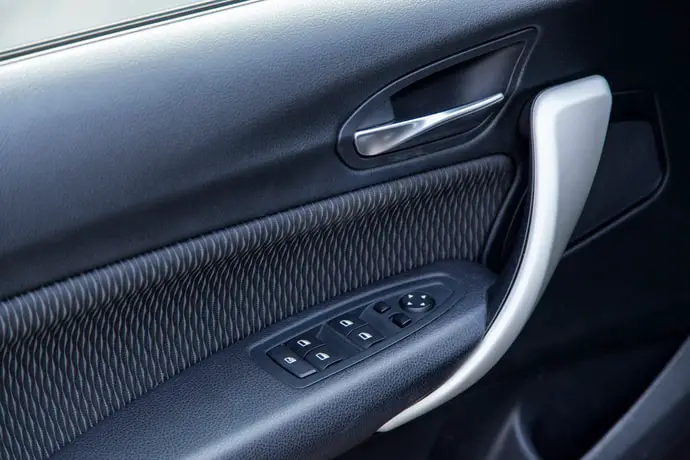Last Updated on August 26, 2022 by

Exposure to the weather can be unforgiving on the plastic trim of any car. These days, many cars use plastic trim for wing mirror parts, bumpers, and so on. All of these areas can become faded over time as they endure the harsh sun, the cold, and the rain. This can leave them looking faded and decidedly weathered and worn. So, is there a way to restore them back to their former glory?
The good news is that there are a number of ways in which you can restore faded plastic trim around your car. In fact, some of these tips will even work for the plastic trim inside the vehicle, too. Some of them are easy and require a little bit of elbow grease and some easy to get products, while others require a bit more caution and skill.
Preparing Your Plastic Trim
Before you dive in and work on the faded plastic, it’s important to clean the car with soap and water first. This gets rid of any dust, dirt, and grime that has built up on the surface of the plastic. It will also facilitate a much better restoration effort.
Make sure that you carefully rub down any plastic areas you want to restore with a clean microfiber cloth. You’ll also need to ensure that the plastic is nice and dry.
1. Plastic Restore Solution
Fortunately, there are a number of official plastic restoration products on the market that you can buy. If you can, make sure that you buy one that isn’t silicone based, as it will likely last a bit longer. It’s also very important that you wear protective gloves during this process because the gel can be quite messy, and it does contain potentially harmful chemicals.
Plastic restoration solution is great for plastic bumpers that have seen better days. Use masking tape to protect areas of the car body that are right next to the faded plastic areas, and then use a clean non-abrasive cloth to rub in the plastic restoration gel. It’s very important that the plastic is clean and dry because this will ensure a proper bond between the gel and the plastic.
The gel will do two things: The gel layers will protect the plastic underneath and prevent it from further damage; and the gel will also make the plastic look more saturated and give it something of a wet look so that it looks fresh.
2. Spray Painting
If you don’t want to use a plastic restoration product and you have some spray painting experience, this may be the solution for you. Once again, you’ll need to ensure that the plastic trim is clean and dry before proceeding.
Spray painting the black trim can really make it stand out and will literally cover any faded and worn looking areas. The benefit of this method is that it tends to last much longer than using plastic restorer when done correctly. However, you will be painting the entire trim, and not just restoring certain areas, so bear that in mind.
It takes a bit of elbow grease to do this, so the best thing to do first is to use sandpaper to sand down all of the trim. A 220 grit paper will be good for this, and you need to make sure that you generate a nice smooth surface with some teeth for the paint to bond to.
Next, you’ll need to use a good quality priming paint. This will bond with the underlying plastic and will provide a smooth surface for the paint. Once this is done, it’s time to carefully spray paint the entire trim. You’ll need to do this at least nine or ten times to get an even coat. Once it’s completely dry, you should go over it with a transparent primer or isolating coat. This will provide a protective layer and will prevent further damage.
3. Heat Gun Restoration
It might sound crazy, but it is possible to use a heat gun to restore faded plastic trim on your car. If you have one in the garage that you have used for other projects around the home, it’s worth giving it a try. The good news about this method is that it’s easy to do and doesn’t take too long.
Having said all of that, you do need to be very careful when using a heat gun. There is the obvious risk of a high heat, but there is also the risk of melting the plastic trim if used without much caution.
The idea is to keep the heat gun about three or four inches above the faded area of the trim. Use a small circular motion, and don’t keep it on one spot for too long, otherwise this will definitely melt the plastic, and you’ll have an even bigger headache to deal with.
So how does it work? If you use the heat gun correctly, you should start to see the faded areas disappear. This is because the heat is drawing up all of the oils in the plastic to the surface and restoring the faded areas to look like new.
4. Linseed Oil
If you don’t like the sound of using a heat gun and you don’t have the skills to spray paint, you might want to try linseed
Get the linseed
Conclusion
Most modern cars use plastic trim in their construction, but the problem is that when it’s faded, it can make the car look old and tired. If you want to restore value to your car, you can restore your plastic trim using one of a number of methods.
